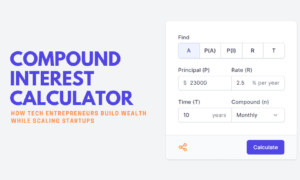Introduction
In the rapidly evolving landscape of data-driven decision-making, businesses are grappling with an overwhelming amount of information. Analyzing vast datasets can be a daunting task, and traditional reporting methods may not always unveil crucial insights hidden within the noise. This is where exception based reporting comes into play as a powerful tool to help businesses navigate through the data deluge.
The Essence of Exception-Based Reporting
At its core, Exception-Based Reporting is a method that focuses on identifying and highlighting significant deviations, anomalies, or outliers in data sets. Instead of drowning in excessive details, businesses can concentrate on exceptional events that demand immediate attention. These exceptions are typically events that deviate from expected patterns or established norms.
In the realm of business operations, exceptions can manifest in various ways. For instance, an unusual spike in customer complaints, a sudden decrease in sales, or a security breach could all be considered exceptions. By directing attention to these exceptional events, businesses can promptly take corrective actions, minimize risks, and capitalize on emerging opportunities.
The Benefits of Exception-Based Reporting
Exception-Based Reporting offers myriad advantages that can drive business success:
Proactive Decision-Making: By identifying exceptions in real-time, businesses can proactively respond to potential challenges and opportunities. Rather than reacting after the fact, they can stay ahead of the curve.
Efficiency and Resource Optimization: Focusing on exceptions allows businesses to allocate their resources more efficiently. They can concentrate on resolving critical issues rather than sifting through irrelevant data.
Risk Management: Exception-Based Reporting serves as a powerful risk management tool. Businesses can rapidly detect potential threats and mitigate risks before they escalate.
Customer Experience Enhancement: Swiftly addressing exceptions related to customer complaints or service issues can significantly improve the overall customer experience.
Fraud Detection and Security: Exception-Based Reporting aids in the early detection of fraudulent activities or security breaches, ensuring timely intervention.
Implementing Exception-Based Reporting
The successful implementation of Exception-Based Reporting requires a structured approach:
- Clearly Define Exception Criteria: Businesses must determine the criteria that qualify an event as an exception. Collaborating with relevant stakeholders can help establish meaningful thresholds.
- Collect and Validate Data: Robust data collection is essential. Ensuring data accuracy and consistency is critical for reliable reporting.
- Choose the Right Tools: Exception-Based Reporting relies on advanced analytics and visualization tools. Selecting the appropriate technology can enhance the effectiveness of the reporting process.
- Automate the Reporting Process: Automating the reporting process ensures that exceptions are promptly flagged and communicated to the relevant stakeholders.
Exception-Based Reporting in Different Industries
Exception-Based Reporting, or more commonly known as reporting by exception, is versatile and applicable across various industries:
- Retail: In the retail sector, Exception-Based Reporting can quickly identify product demand fluctuations and optimize inventory levels. For instance, if a certain item experiences an exceptional surge in sales, retailers can promptly restock it to meet the demand.
- Finance: In financial institutions, Exception-Based Reporting helps detect suspicious activities, such as unusual transactions that might indicate fraud. It empowers financial organizations to safeguard their customers’ assets.
- Healthcare: In healthcare, Exception-Based Reporting can help identify abnormal patient conditions or medication errors. Timely detection can lead to better patient outcomes.
- Manufacturing: Manufacturers can leverage Exception-Based Reporting to identify defects in production processes or deviations from quality standards. Early intervention can lead to enhanced product quality.
- Hospitality: In the hospitality industry, Exception-Based Reporting can assist in maintaining high levels of customer satisfaction by swiftly addressing service-related issues and guest complaints.
- Transportation and Logistics: For transportation and logistics companies, Exception-Based Reporting can optimize supply chain management by identifying delays, disruptions, or inefficiencies.
The Role of Business Intelligence (BI) Tools in Exception-Based Reporting
Business Intelligence (BI) tools play a pivotal role in Exception-Based Reporting. These tools provide the necessary infrastructure to gather, store, and analyze vast amounts of data. With BI tools, businesses can create interactive dashboards and reports that showcase exceptions effectively.
BI tools also facilitate data visualization, enabling decision-makers to spot trends, patterns, and outliers. Users can interact with the data, drilling down into specific exceptional events to gain deeper insights.
Implementing Exception-Based Reporting – A Step-by-Step Guide
Implementing Exception-Based Reporting involves several key steps:
- Clearly Define Exception Criteria: Before diving into the implementation process, businesses must determine the specific events that qualify as exceptions. Collaborating with relevant stakeholders, such as department heads, data analysts, and business leaders, is essential for setting meaningful criteria.
- Data Collection and Integration: Exception-Based Reporting relies on accurate and consistent data. It is crucial to collect data from relevant sources and integrate it into a central repository or data warehouse. Data integration ensures that all necessary information is accessible for analysis.
- Choose the Right Analytics Tools: The choice of analytics tools is critical for successful Exception-Based Reporting. Businesses must select tools that align with their specific needs and provide robust features for data analysis and visualization.
- Data Analysis and Visualization: Once the data is collected and integrated, businesses can begin the analysis phase. BI tools play a crucial role in this step by allowing users to explore data visually and identify exceptions through interactive dashboards and reports.
- Define Exception Thresholds: Setting appropriate thresholds is vital for distinguishing normal occurrences from exceptional events. These thresholds can be adjusted based on historical data, business objectives, and input from domain experts.
- Automated Alerting: To maximize the impact of Exception-Based Reporting, businesses can set up automated alerting systems. When an exception occurs, the system triggers alerts to relevant stakeholders, prompting timely responses.
- Continuous Monitoring and Improvement: Exception-Based Reporting is an ongoing process. Continuous monitoring and fine-tuning of the reporting system ensure that it remains effective and relevant over time. Feedback from users and periodic data analysis can lead to process improvements.
Challenges in Exception-Based Reporting
While Exception-Based Reporting offers numerous benefits, businesses may encounter certain challenges during implementation:
-Threshold Tuning: Setting the right thresholds can be a delicate task. Striking a balance between generating actionable alerts and avoiding false positives is crucial.
-Data Quality and Consistency: Exception-Based Reporting heavily relies on data accuracy and consistency. Incomplete or inaccurate data can lead to misleading results.
-Data Integration Complexity: Integrating data from various sources can be complex, especially when dealing with diverse data formats and systems.
-Alert Overload: Without proper threshold tuning, businesses risk receiving an overwhelming number of alerts, leading to alert fatigue and reduced responsiveness.
Conclusion
Exception-Based Reporting is a powerful asset in the arsenal of modern businesses seeking data-driven success. By focusing on exceptional events, businesses can proactively respond to emerging challenges and capitalize on opportunities. The benefits of Exception-Based Reporting extend to various industries, from retail to finance, healthcare, and manufacturing.
To implement Exception-Based Reporting successfully, businesses must establish clear exception criteria, ensure data accuracy, and leverage the right analytical tools. With the aid of Business Intelligence (BI) tools, they can transform massive datasets into actionable insights.
Embracing Exception-Based Reporting empowers businesses to navigate the complexities of the data landscape with precision and agility, shaping a future of informed decision-making and sustainable growth.

































